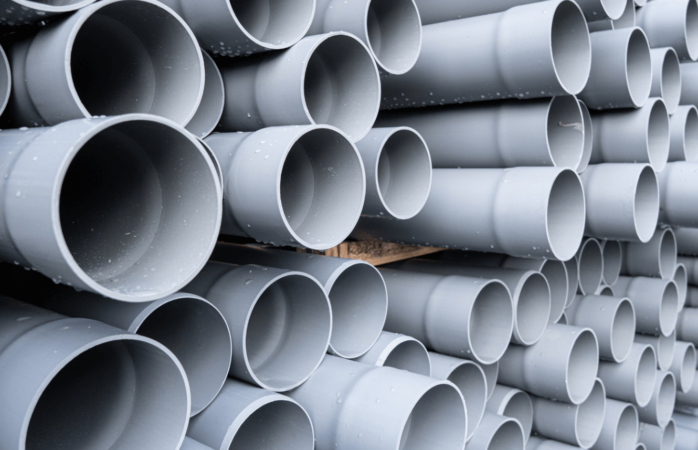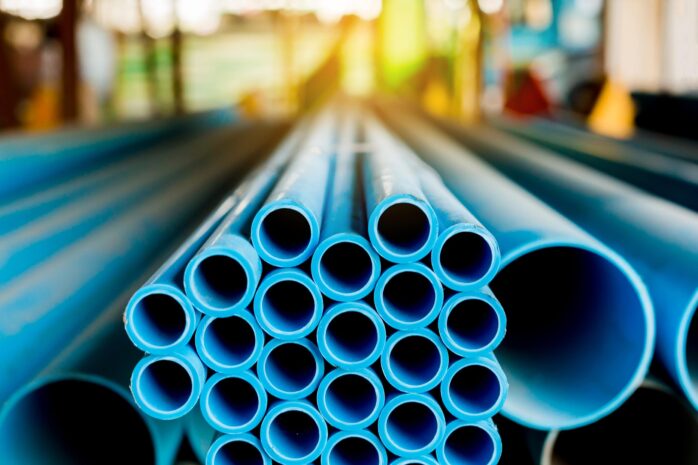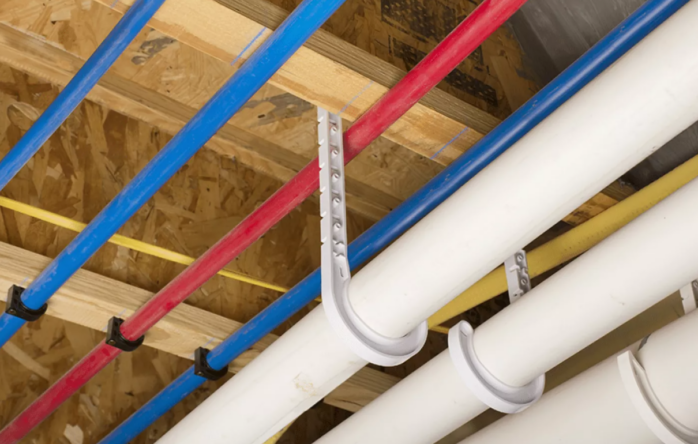Plumbing systems are complex mazes of pipes and fittings that transport water throughout a building to supply fixtures and appliances. Selecting the right materials for plumbing pipes and fittings is crucial to creating a safe, durable, and high-performing system.
Two of the most popular options are PEX (cross-linked polyethylene) and PVC (polyvinyl chloride). PEX is a flexible plastic tubing that has gained popularity in recent decades for water supply lines.
Made from bendable polyethylene, PEX uses specially designed compression fittings to connect pipe segments.
PVC is a rigid plastic piping traditionally used for drain lines, sewers, and vent stacks. Joints are sealed with PVC cement. Choosing between PEX and PVC depends on factors like flexibility, pressure ratings, ease of installation, cost, and exposure risks.
This article will delve into the pros and cons of each material to help determine which is optimal for specific plumbing applications. Brands like Lasco manufacture fittings compatible with both PEX and PVC.
PEX Background/Overview

PEX (cross-linked polyethylene) was introduced in the 1960s but saw a surge in popularity in North American residential plumbing systems in the 1990s.
It is a flexible plastic tubing made from high-density polyethylene (HDPE) that has been cross-linked to improve strength and flexibility. PEX is commonly used for water supply lines, radiant floor heating systems, and hydronic distribution.
It is valued for its flexibility, corrosion resistance, and easy installation using PEX tubing and specialized crimp, push-to-connect, or expansion Everflow PEX fittings. PEX tubing is available in red, blue, and white to differentiate between hot, cold, and potable water lines.
Proponents highlight the lower cost of PEX compared to copper, resistance to scale buildup, and reduced risk of leaks versus rigid piping.
PVC Background/Overview
Polyvinyl chloride (PVC) plastic pipe was introduced in the 1940s and quickly became a durable, affordable alternative to traditional metal piping.
PVC is available as rigid pipe stock or flexible tubing used for drain, waste, and vent (DWV) systems, sewer lines, water mains, irrigation, and more.
It is valued for its chemical resistance, low cost, and lightweight. PVC is installed using PVC cement/primer to permanently fuse joints, or compression fittings like those Lasco PVC fittings. It is commonly white or off-white in color.
PVC is classified by schedules that designate wall thickness and pressure ratings for different applications like Schedule 40 for DWV. Tradesmen appreciate PVC’s easy installation, modular connections, and corrosion resistance versus metal pipes.
Limitations include its inability to withstand high heat and the potential environmental impacts of PVCs if disposed of improperly.
PEX Pros
PEX (cross-linked polyethylene) is a flexible plastic piping material that has become widely used in recent years for plumbing and hydronic heating systems.
Some of the main advantages of PEX are that it is far more flexible and easier to install than rigid piping like PVC or copper.
PEX tubing can bend and turn corners easily without needing elbow joints or couplings. This makes it ideal for running pipes in tight spaces. PEX also doesn’t require solvents or glues for connecting fittings, further simplifying installation.
The flexible nature of PEX allows it to expand and contract with temperature changes, preventing burst pipes in winter.
PEX is also highly resistant to scale buildup and corrosion from chlorine and minerals in water. Overall, PEX provides a durable, quiet, and easy-to-install option for water supply lines.
PVC Pros

PVC (polyvinyl chloride) is a rigid plastic piping that has been a dominant material for plumbing and drainage systems. PVC is valued for its high durability and pressure rating at a relatively low cost.
Smooth interior PVC walls allow for efficient water flow with minimal friction loss. PVC piping maintains its rigidity during and after installation, making it easy to work with and long-lasting.
Its non-corrosive properties prevent the buildup of minerals and sediments inside the pipe over time. PVC meets health standards for potable water contact, receiving NSF/ANSI approval.
It also possesses fire-resistant and temperature-resistant qualities. With good chemical resistance and mechanical strength, PVC provides a solid, standardized option for both household and municipal plumbing systems.
The durability and reliability of PVC is why it continues to be a first choice for plumbers.
PEX Cons
While flexible PEX tubing has many advantages, it also has some drawbacks to consider. The main downside of PEX is its higher upfront material cost compared to PVC. PEX tubing can also become damaged and weakened if exposed to UV light from the sun.
It has more limited pressure and temperature ratings than rigid piping. Rodents can chew through PEX lines if unprotected. PEX requires proprietary push-fit or crimp fittings designed only for PEX, limiting options.
Over time, PEX can develop biofilms or scale buildup that reduce flow, requiring periodic flushing or replacement.
Overall, PEX is a good option for many uses if installed properly, but it is important to factor in its limitations compared to PVC or copper. Using Everflow valves with PEX can help optimize its performance.
PVC Cons

Rigid PVC piping has been a standard for decades but does have some disadvantages. PVC can be tricky to maneuver into tight spaces and around corners, especially for DIY installers. Like PEX, PVC is vulnerable to UV light if exposed.
At low temperatures, PVC becomes brittle and can crack under pressure. Gluing PVC with solvent cement produces toxic fumes. PVC also has a tendency to deform under high heat. Thermal expansion and contraction of PVC require allowance in installation.
In hard water areas, scale buildup can accumulate inside PVC pipes over time. Overall, PVC is a proven piping material but consideration should be given to its limitations.
When comparing PEX versus PVC for plumbing systems, each material has advantages that make it better suited for certain applications.
For water supply lines carrying potable water, PEX is generally the superior option, providing flexibility, corrosion resistance, and easier installation than rigid PVC.
However, for drain lines and non-potable water applications where high pressures or temperatures may be involved, PVC is the better choice due to its rigidity and high-pressure rating.
Consider temperature needs, chemical exposure, and local codes when selecting between them.
In the right application, both PEX and PVC can provide durable and reliable performance. Consult a professional plumber if uncertain about choosing the best pipe material.



















